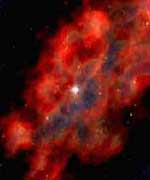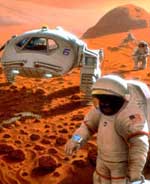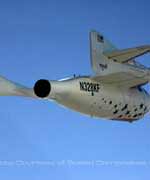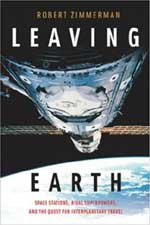A NASA institute has selected a new University of Colorado at Boulder proposal for further study that describes how existing technologies can be used to study planets around distant stars with the help of an orbiting “starshade.”
The concept by CU-Boulder Professor Webster Cash of the Center for Astrophysics and Space Astronomy was one of 12 proposals selected for funding Sept. 28 by the NASA Institute for Advanced Concepts, or NIAC. Cash’s proposal details the methods needed to design and build what essentially is a giant “pinhole camera” in space.
The football field-sized starshade would be made of thin, opaque material and contain an aperture, or hole, in the center roughly 30 feet in diameter to separate a distant planet’s light from the light of its adjacent parent star, Cash said. A detector spacecraft equipped with a telescope would trail tens of thousands of miles behind the orbiting starshade to collect the light and process it.
Such a system could be used to map planetary systems around other stars, detect planets as small as Earth’s moon and search for “biomarkers” such as methane, water, oxygen and ozone. Known as the New Worlds Imager, the system also could map planet rotation rates, detect the presence of weather and even confirm the existence of liquid oceans on distant planets, he said.
“In its most advanced form, the New Worlds Imager would be able to capture actual pictures of planets as far away as 100 light-years, showing oceans, continents, polar caps and cloud banks,” said Cash. If extra-terrestrial rainforests exist, he said, they might be distinguishable from deserts.
“To me, one of the most interesting challenges in space astronomy today is the detection of exo-solar planets,” said Cash. “We have created an affordable concept with very practical technology that would allow us to conduct planet imaging in visible and other wavelengths of light.”
The beauty of the pinhole as an optical device is that it functions as an almost perfect lens, said Cash, who is a professor in CU-Boulder’s astrophysical and planetary sciences department. ‘This device would remove the limiting problem of light scattered from the parent star due to optical imperfections.”
The successful proposal was authored by Cash, Princeton University’s Jeremy Kasdin and Sara Seager of the Carnegie Institution of Washington. Nine other proposal advisers from universities and industry contributed to the New Worlds Imager concept, said Cash.
NIAC was created in 1998 to solicit revolutionary concepts from people and organizations outside the space agency that could advance NASA’s missions. The winning concepts, chosen because they “push the limits of known science and technology,” are expected to take at least a decade to develop if they eventually are selected for a mission flight, according to NASA.
In 1999, Cash headed a winning NIAC proposal for a new, powerful x-ray telescope technology that will allow astronomers to peer into the mouths of black holes. That telescope package is now under development by NASA as the multi-million dollar MAXIM mission and is slated for launch next decade.
Other concepts funded in 2004 by NIAC include a proposal for a lunar space elevator, new super-conducting magnet technology for astronaut radiation protection and a magnetized beam plasma-propulsion system.
Teams that submitted winning proposals to NIAC this year were awarded $75,000 for a Phase 1, six-month viability study. Those proposals that go on to win approval for Phase 2 studies next year by the space agency will be funded with up to $400,000 for two additional years, according to NASA.
“We are thrilled to team up with imaginative people from industry and universities to discover innovative systems that meet the tremendous challenge of space exploration and development,” said NIAC Director Robert Cassanova. Cassanova also is a member of the Universities Space Research Association, which administers NIAC for NASA.
Original Source: UCB News Release





